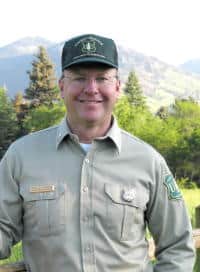
When I was working in Region 2, I used to call this project “Reasonable Access for Unreasonable People”- I think at that point it involved ANILCA access to private land, and not a land exchange. This is a later incarnation of the same project.
For those who don’t remember the first incarnation, there was the infamous Redskin Tickets and Tetratech. Note that this is from a 2007 Denver Post editorial titled “scale back oversized plans for pristine area”:
Colorado Wild researchers may have found the proverbial “smoking gun” to back up their charges. According to the Herald, the project foes found e-mails from Tetra Tech executive Mark Blauer to Honts, asking for Washington Redskins football tickets for members of his staff who “put their heart and soul into your EIS.”
District Judge John Kane blocked construction of the roads until the case is finished and said the e-mails between Blauer and Honts raise concerns about the integrity of the EIS process.
It’s interesting that the Post editorial board (or the headline writer) called the area “pristine.” It was next to a ski area. So in the next incarnation, the proponents tried this.
Why is the proposed Land Exchange better?
We believe the Village at Wolf Creek Land Exchange offers an opportunity to develop a village that is unique in character compared with other ski villages. Specifically, by moving the Village into the trees away from the ski mountain, it creates a place of tranquility and solitude not found at other ski areas. Not to mention that it minimizes any disruption to the experience one feels when skiing at Wolf Creek. Here are the potential public benefits as outlined by the Forest Service in their Draft EIS:
development of private lands would be moved further east from Wolf Creek Ski Area, and would minimize impacts to skiers and ski area operations.
the land exchange would focus residential development and associated infrastructure in an area that is more suitable due to topography, natural resources, and proximity to US Highway 160.
the proposed land exchange would lead to a net gain of wetlands and perennial streams in public ownership.
the proposed exchange would accommodate a lower density development.
the land exchange would replace the need for ANILCA access.
If the ski area is full of people, and can be seen from the area proposed, could that area be “pristine”?
Anyway, in this incarnation, we have Judge Matsch who says (according to this Durango Herald article, I did not read the judge’s opinion)
Senior Judge Richard P. Matsch in no uncertain terms agreed with those concerns.
“What NEPA (National Environmental Policy Act) requires is that before taking any major action, a federal agency must stop and take a careful look to determine the environmental impact of that decision, and listen to the public before taking action,” he wrote in his decision. “The Forest Service failed to do that.”
Matsch noted “predictive bias” in the Forest Service’s decision to approve the land swap, suggesting the agency relied on environmental reviews that favored the developers and their request.
“Public awareness of the fragility of the natural environment has greatly increased in the intervening 30 years, and the need for a scientifically based analysis of the impact of the Forest Service decisions in managing national forest system lands to support a decision is imperative in explaining the decision to the public,” he wrote.
Matsch also took issue with the public comment process.
“The 900 public comments in the record show this heightened public awareness of the effects of human disruption of the native environment,” Matsch wrote. “Notably, responses to the public comments were prepared by the contractors who did the work. They would not be expected to find that work to be flawed.”
I think this is interesting that the judge said this about analysis, because even when I was involved (and I retired five years ago), there was no shortage of analysis including that with a “scientific” basis. I don’t know for sure, but the times I was involved, specialists from the forest reviewed the work of the contractors. I wonder what evidence the judge had that the FS wasn’t doing an adequate job of this?
The other thing about this project is that it shows that even with different political parties, with their own proclivities, in charge, some projects have staying power (30 years?). This should be encouraging to those who are worried about the impacts of the new administration.
And finally, as a citizen, I’d like to thank the people who have worked on the many incarnations of this project, caught between the legal requirements of ANILCA, and the opposition to the project. They have certainly put their hearts and souls into these many iterations and perhaps some generous soul could donate Broncos tickets to them!


